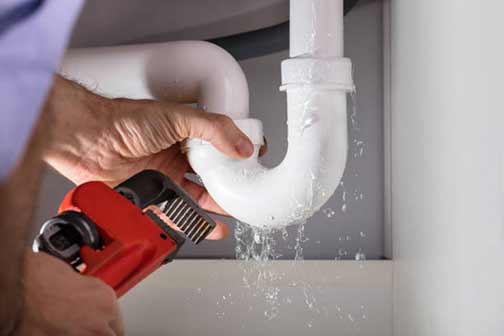
Plumbing emergencies in your home are no joke. What starts as a small problem can quickly grow into a major issue that prevents access to your home’s plumbing fixtures while upsetting your plans for the day and eventually costing hundreds of dollars to fix says Specialized Property Management Charlotte.
But what is a plumbing emergency? Not every plumbing issue in your home is an emergency. Plumbing emergencies are plumbing malfunctions that put your family or home at risk and prevent the normal use of some of your home’s plumbing fixtures.
The characteristics of a plumbing emergency include:
- They are unexpected. Even if there are warning signs, they appear to happen suddenly.
- They require urgent attention because of the amount of discomfort they create.
- They are usually highly disruptive and costly.
For these reasons, it is essential to act fast when dealing with a plumbing emergency. What you do in the first few minutes of discovering an emergency determines how much damage it will cause. In this post, we discuss five drain emergencies that can happen in your home and how to fix them quickly.
5 common Drain Emergencies in the Home and How to Solve Them Swiftly
Blocked drains
A blocked drain is not necessarily a plumbing emergency. But if several drains in your home are blocked at the same time, you could have the beginnings of a plumbing emergency.
A single blocked drain can be solved by plunging it. If several drains are slow/clogged at once, it is usually because the sewer line is blocked. This is a warning sign of an impending sewage backup.
If you are dealing with multiple clogged drains in your home, the right step is to have an emergency plumber clean out the line at once. The best way to do this is with professional hydro jetting or sewer rodding services.
After this is done, you may need to perform a camera inspection to ensure that the problem is over.
Overflowing drains
Most times, when a drain overflows, it is because the initial signs of the problem – bad odors and gurgling sounds from the drain or fluctuating water levels inside the toilet – are not heeded.
The first thing you want to do here is turn off the water supply to stop more from water being added to the water inside the drain. If it is a toilet that is overflowing, please do not attempt to flush it.
Next, try to remove the material blocking the pipe with a handheld drain snake or wire hanger, working gently to avoid damaging the pipe.
This step only works if the blockage is near the drain opening. If the step fails, the clog is farther down the drainpipe. Please call an emergency plumber at once.

Sewer backups
This is the worst plumbing emergency that can happen in your home. A backed-up sewer line is what happens when slow, clogged, and overflowing drains are not fully resolved.
If your sewer line is backing up, do not use any of the plumbing fixtures in the home. That will only make the problem worse by adding more water to the wastewater spilling onto your flooring.
Turn off the water supply at the main water shutoff valve. Remove all items from the path of the spilled water and, if possible, start scoping some of the water into a bucket.
Remember to wear rubber gloves and a face mask before doing this. But before any of that, call an emergency plumber.
Frozen drain pipe
Drainpipes freeze when they are exposed to cold air. This is a common problem with pipes in the unheated spaces in the home.
A frozen drainpipe can put sinks, toilets, showers, and appliances out of commission or even cause your drains to overflow.
To solve the problem, you must first find the frozen pipe. This should be done quickly because the longer a pipe stays frozen, the more likely it is to burst.
To thaw the pipe, use a space heater to warm the room, apply a warm towel directly on the pipe, and use a hair dryer or heat lamp to slowly warm the pipe.
If these steps fail, please call an emergency plumber.
Burst sewer line
If your sewer line is broken, you may see signs of it inside your home in the form of chronically slow and clogged drains.
But sometimes the problem will not affect the drains in your home. Instead, you may notice a wet spot/water pooling in your yard, sewage odors in your home, and lots of vermin on the property.
A broken sewer line is a plumbing emergency because it is a health hazard and poses serious dangers to your lawn and the structural integrity of your building.
The only way to handle this problem is to have a professional plumber assess the damage and recommend the best sewer line repair solutions.
You may have noticed that we consistently used the term “emergency plumber” throughout this post. That is because an emergency plumber, rather than a regular plumber, is the kind of plumber you need to handle a plumbing emergency in your home.
Emergency plumbers are specifically set up to deal with plumbing emergencies. Having an emergency plumber on speed dial is the most effective strategy for reducing the impact of plumbing emergencies on your home.

